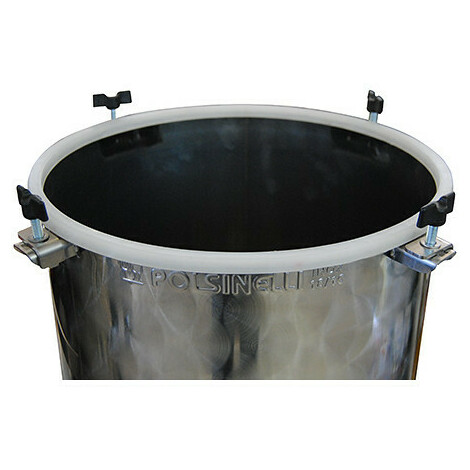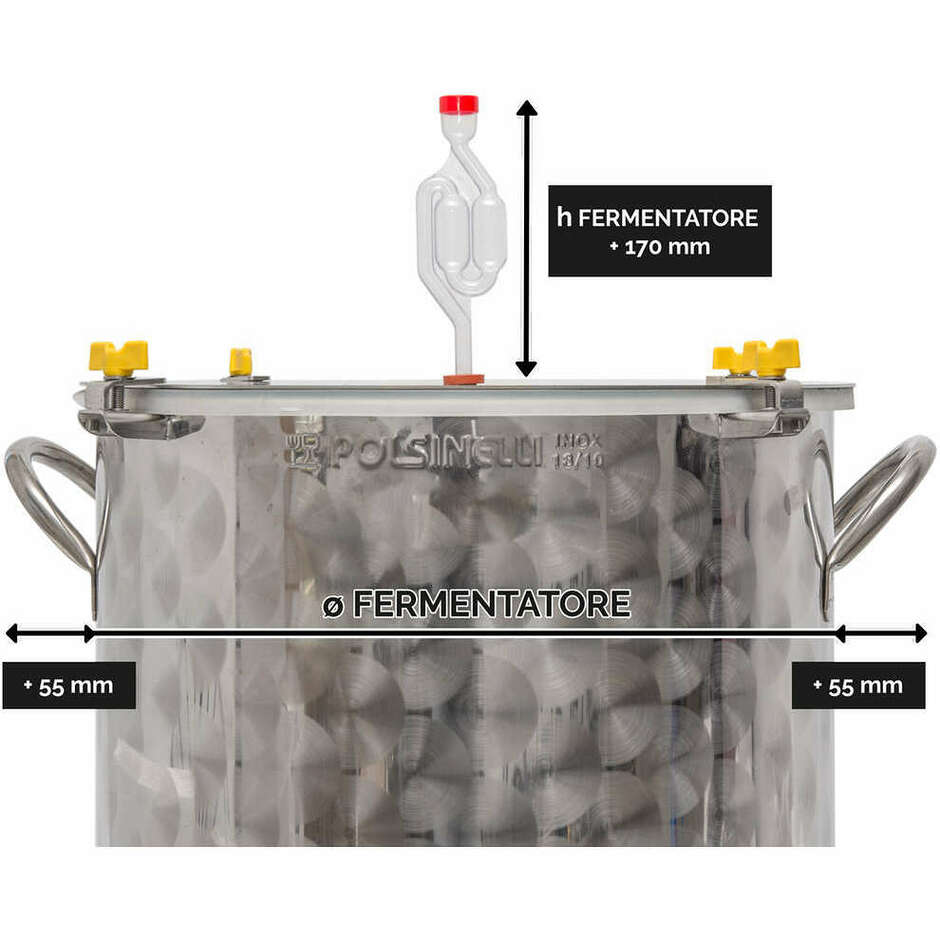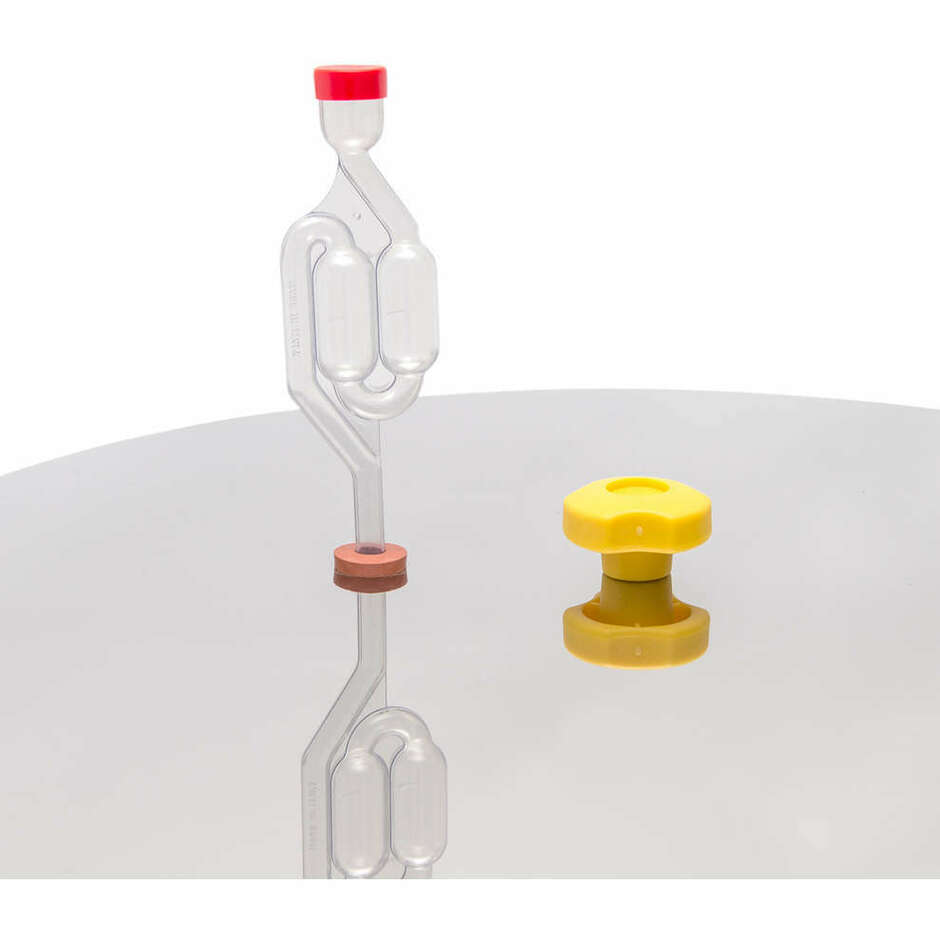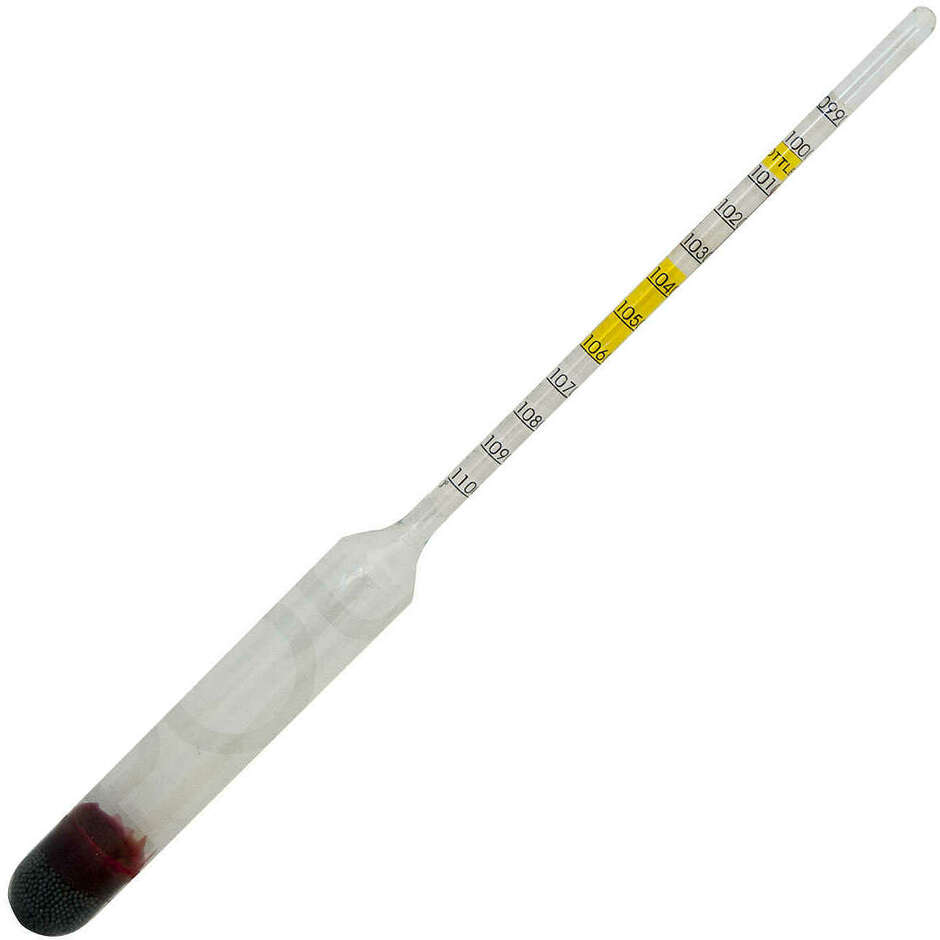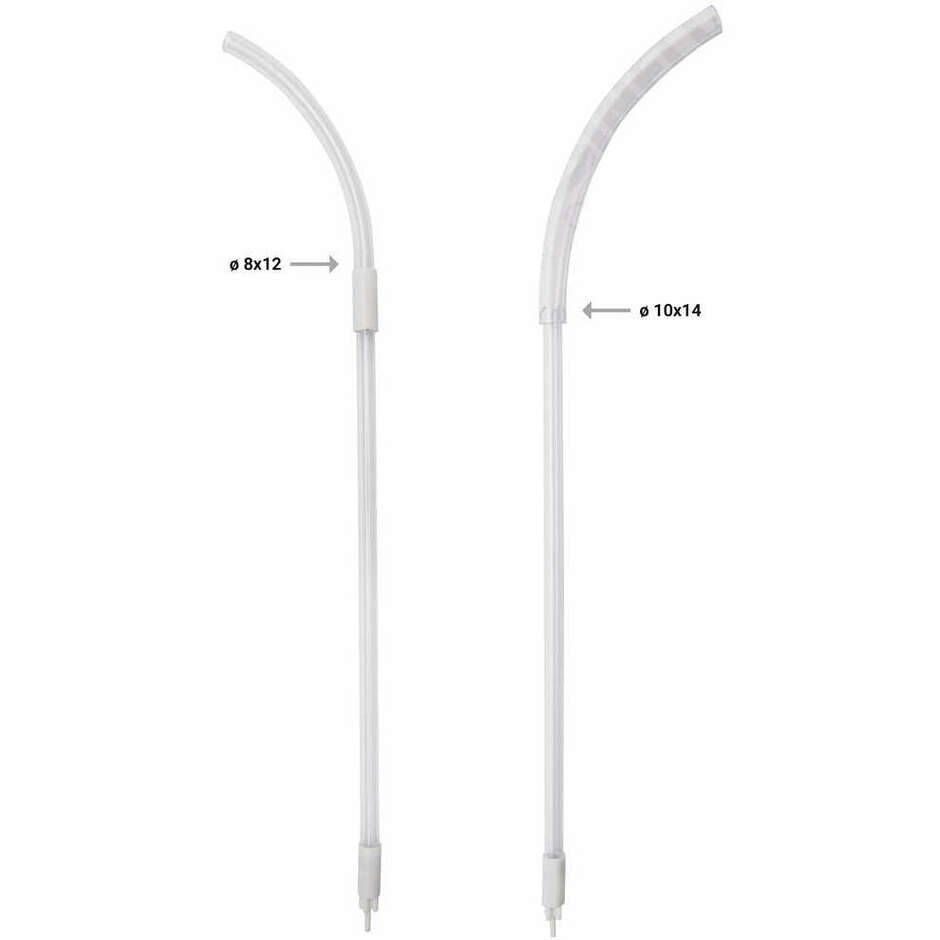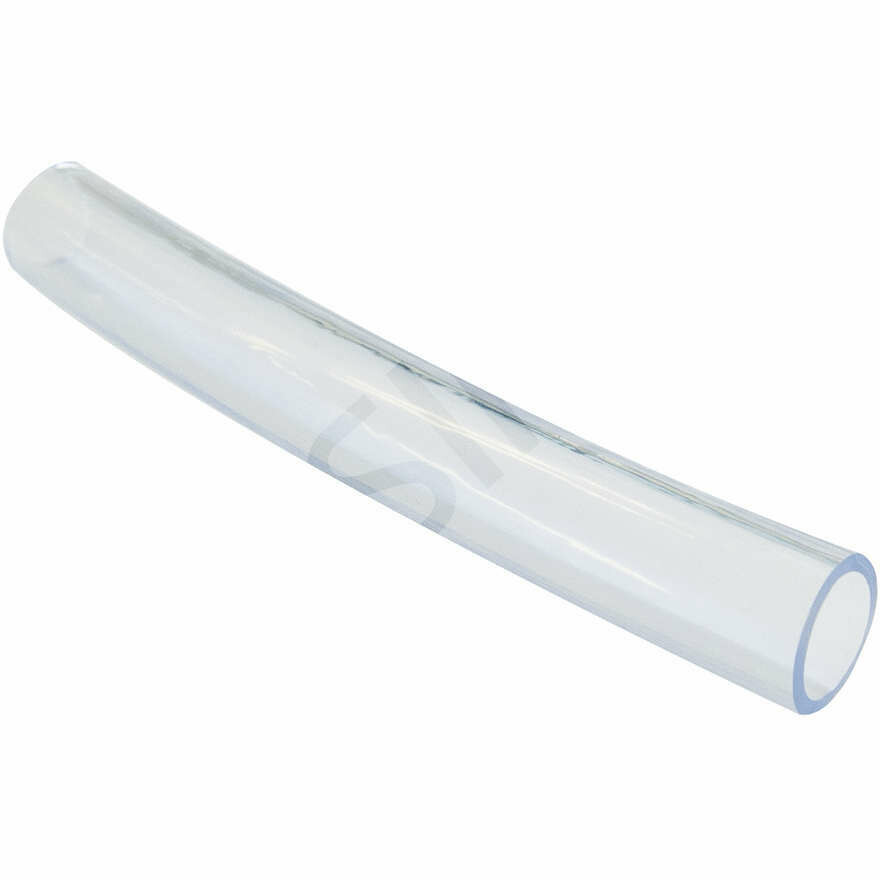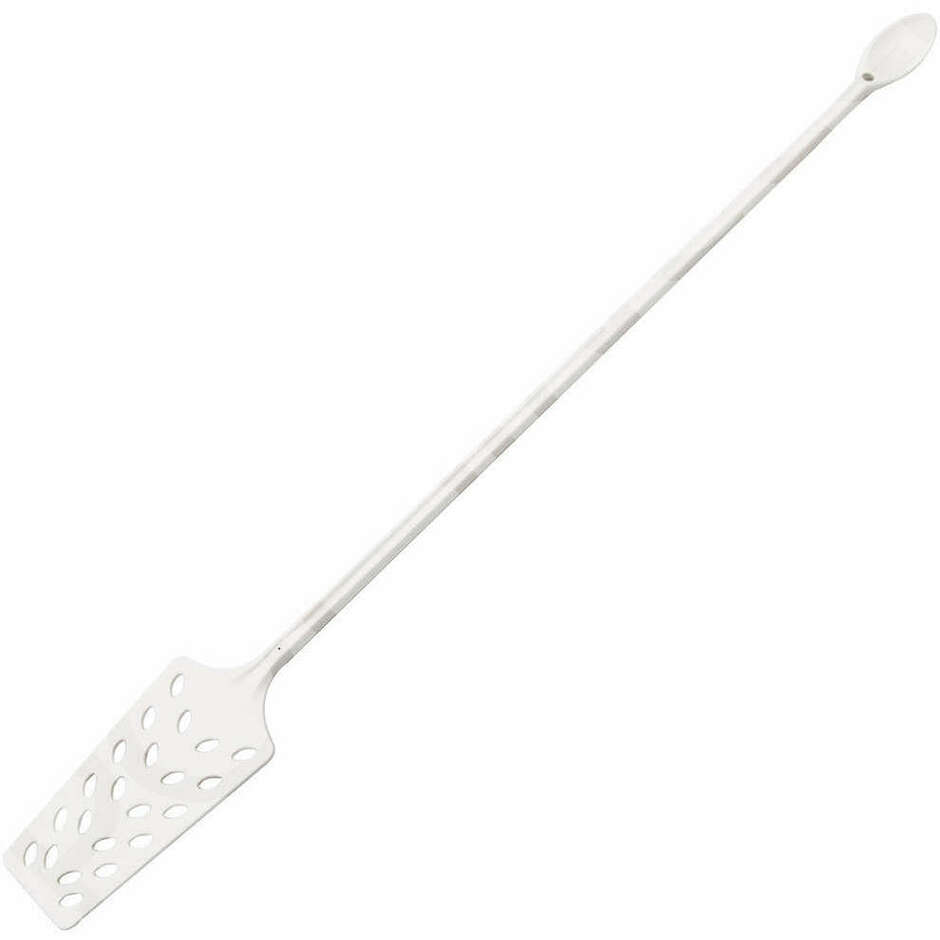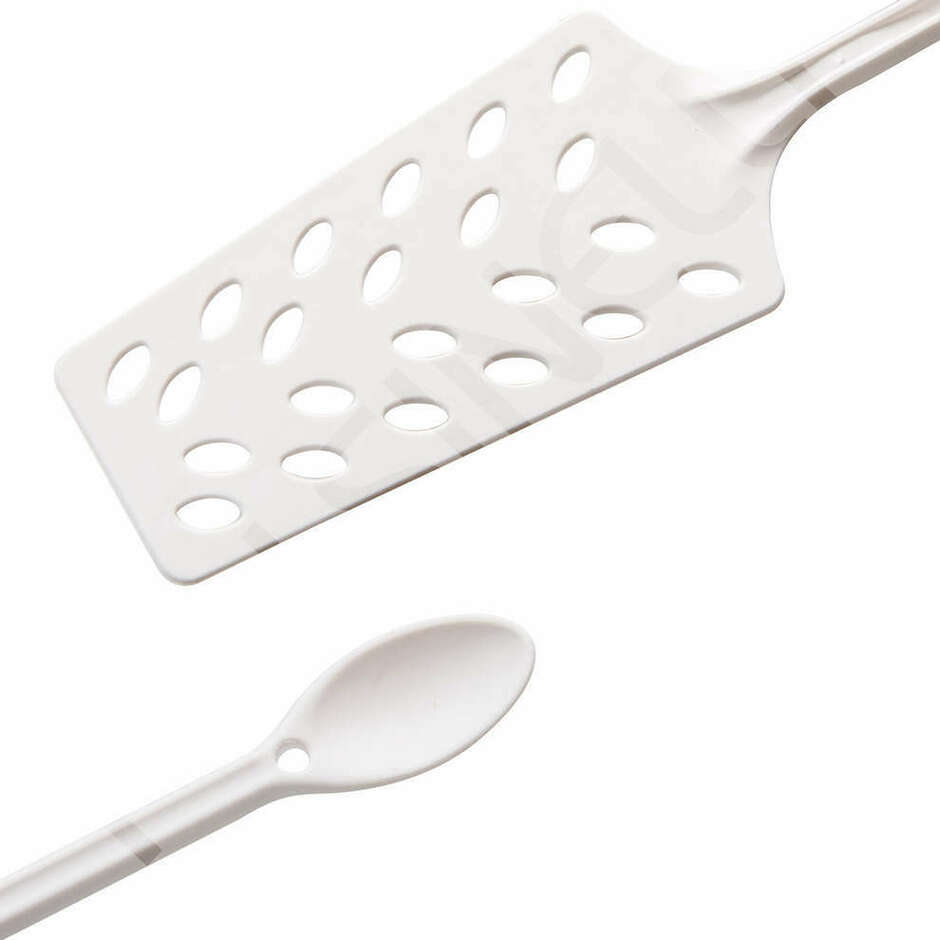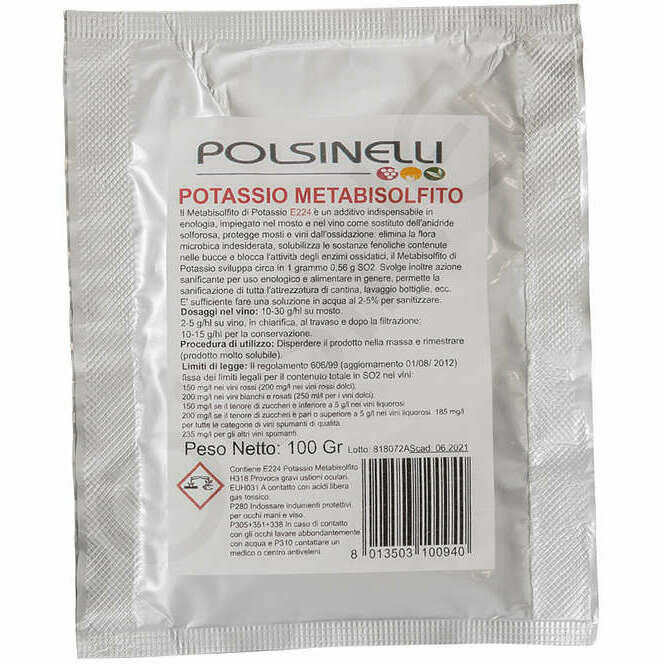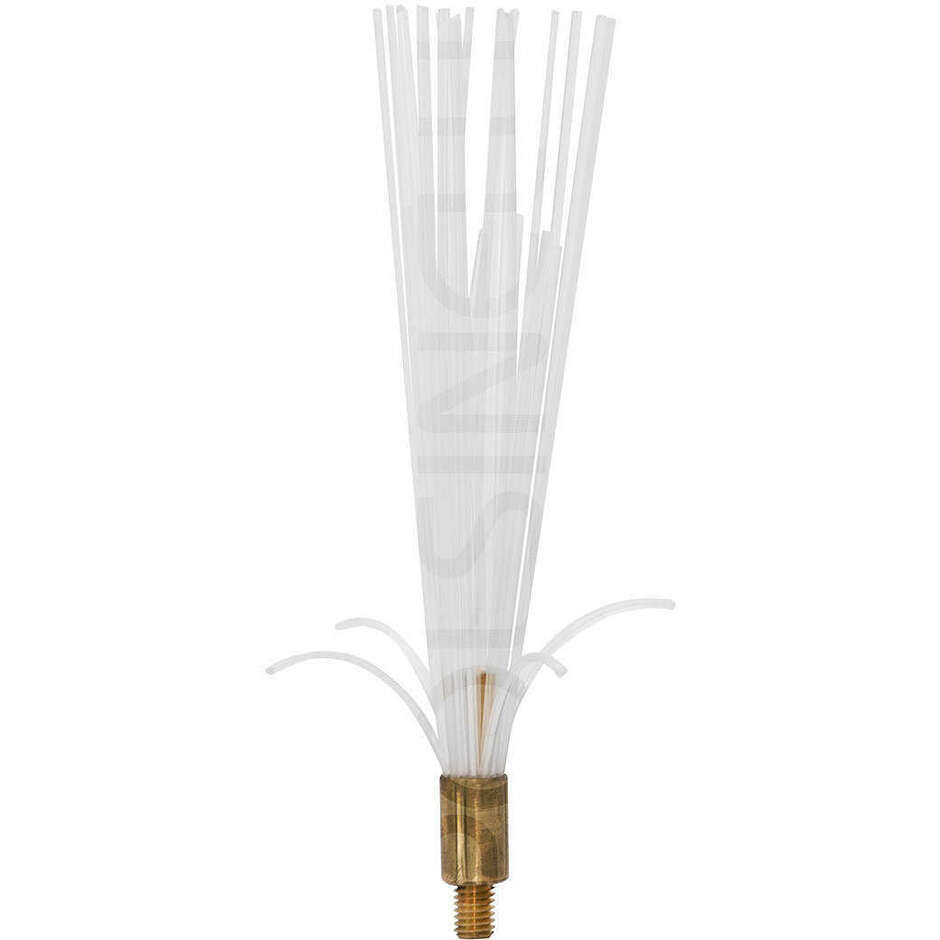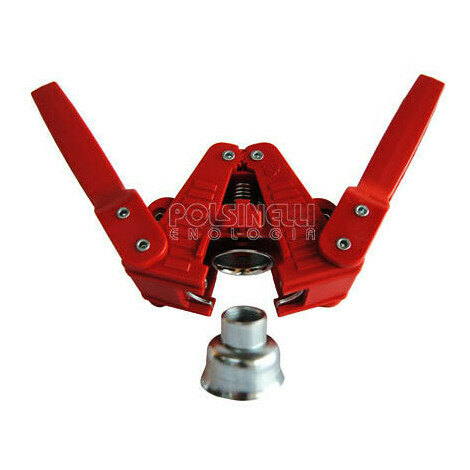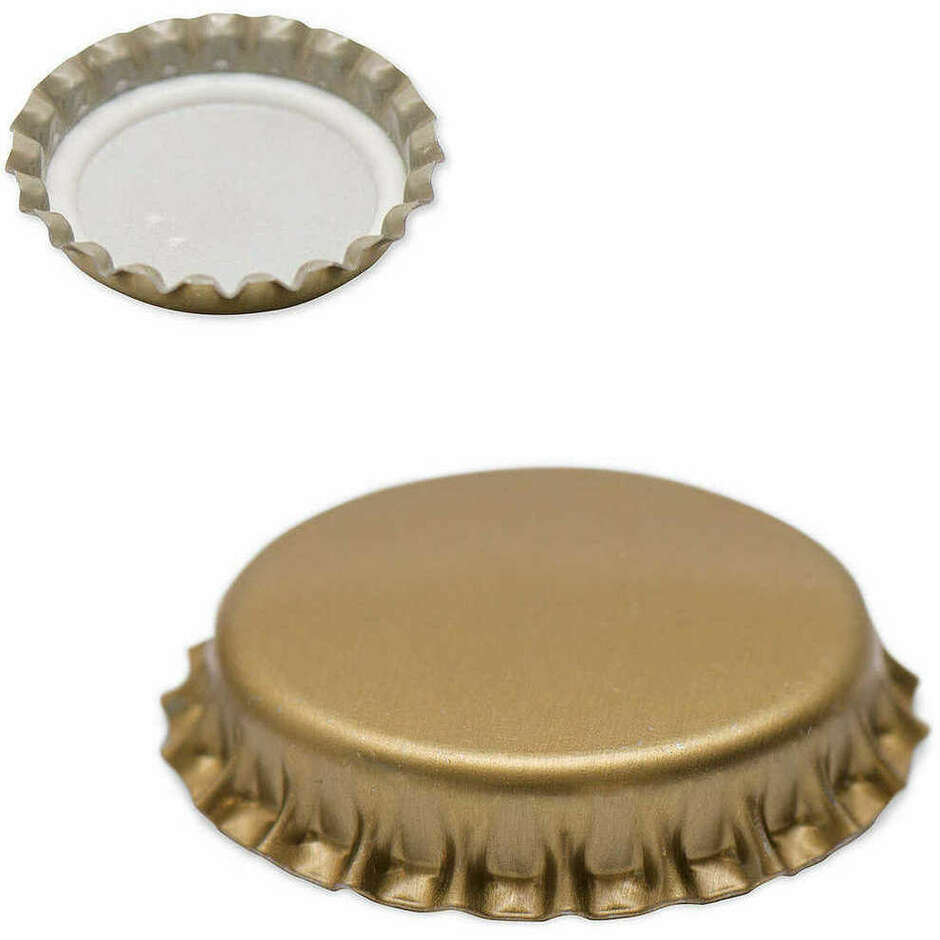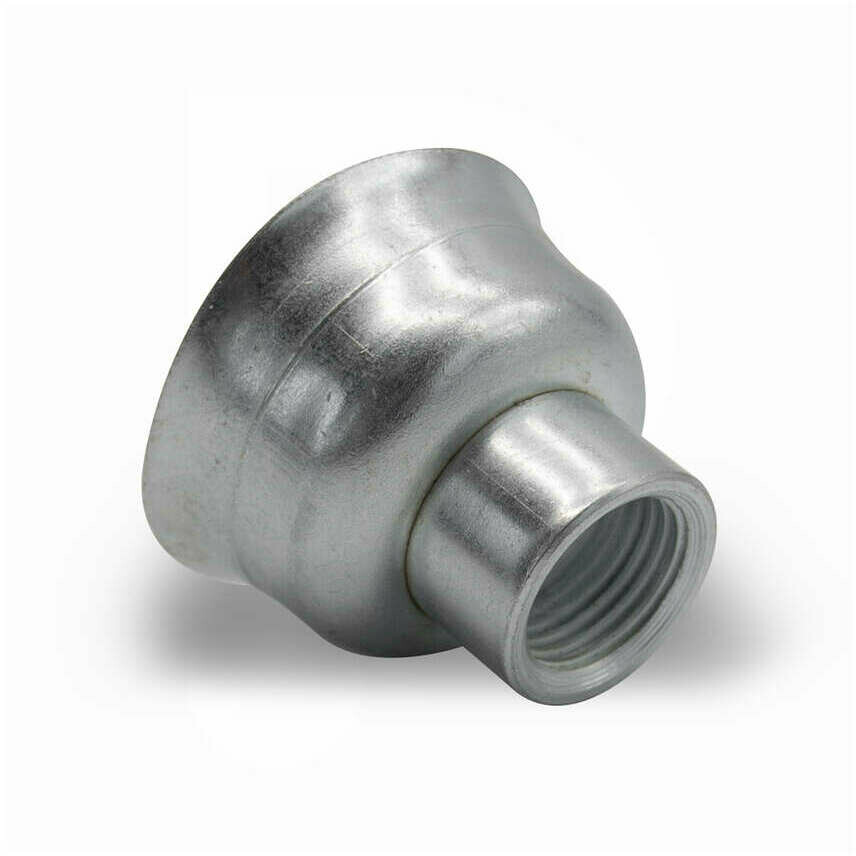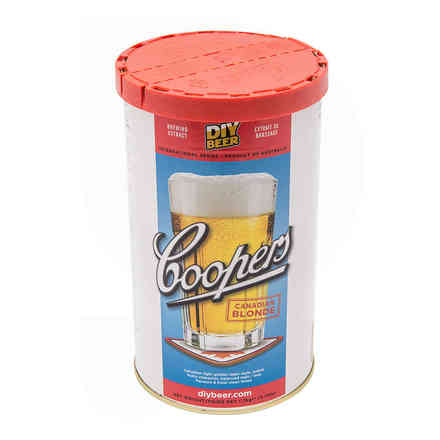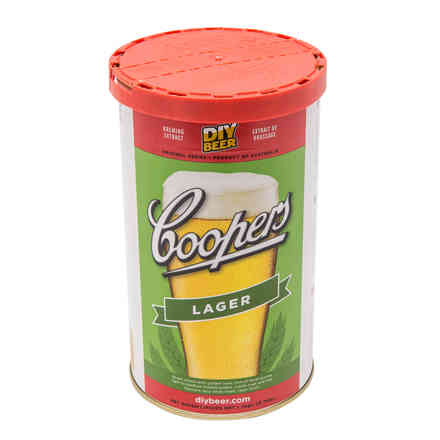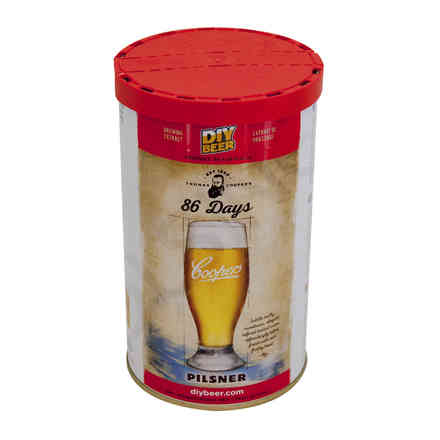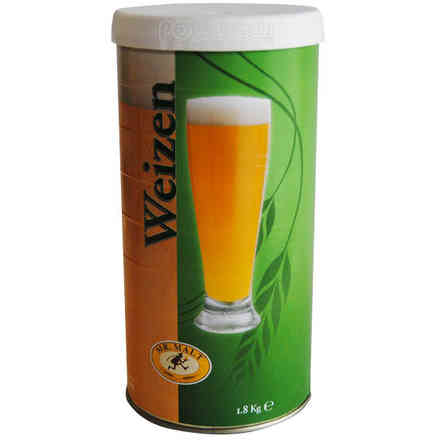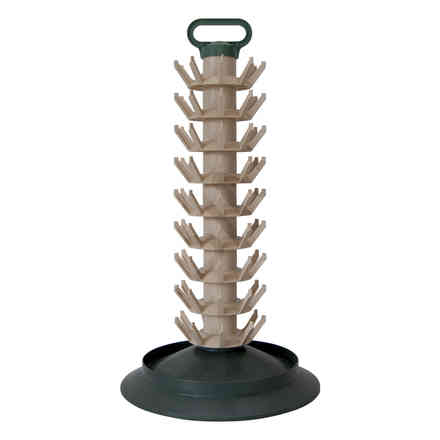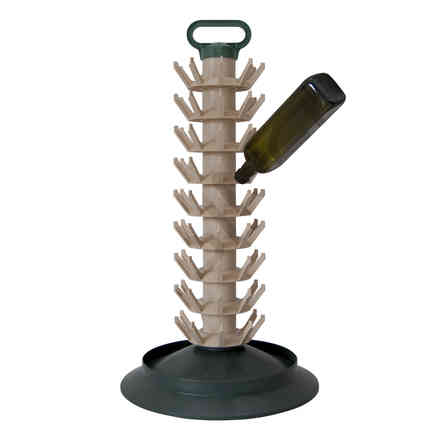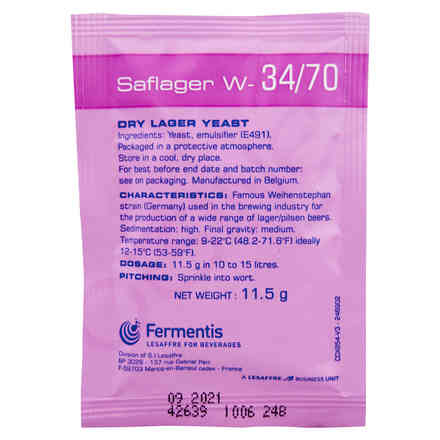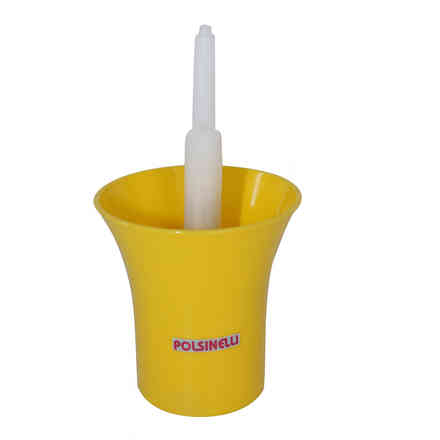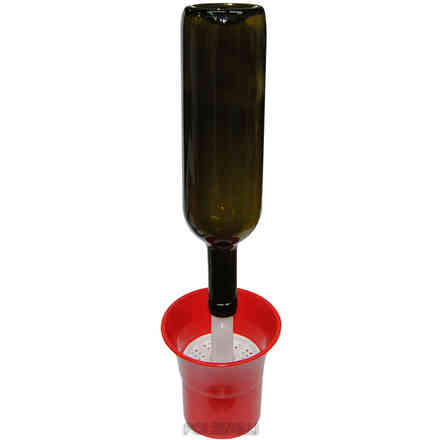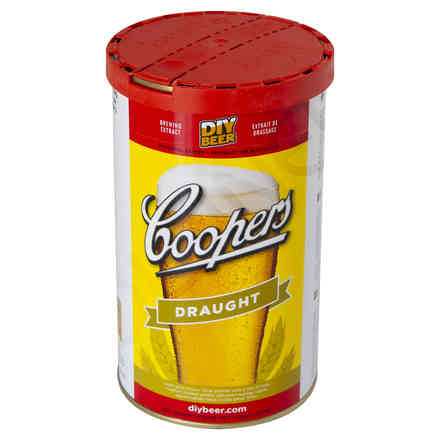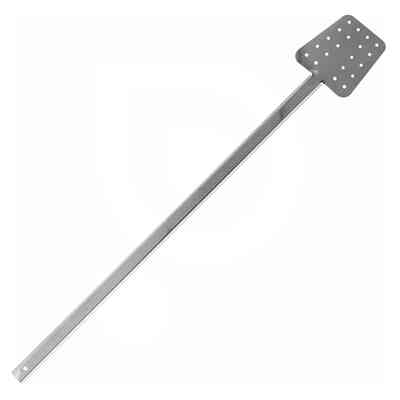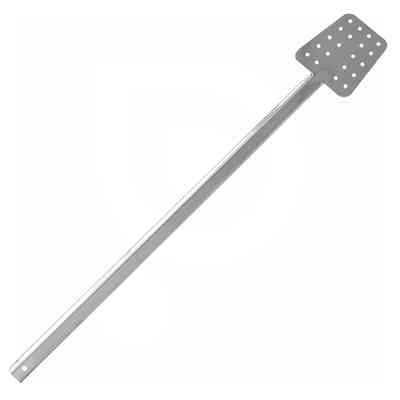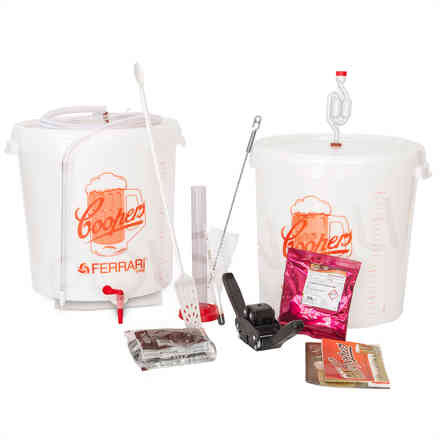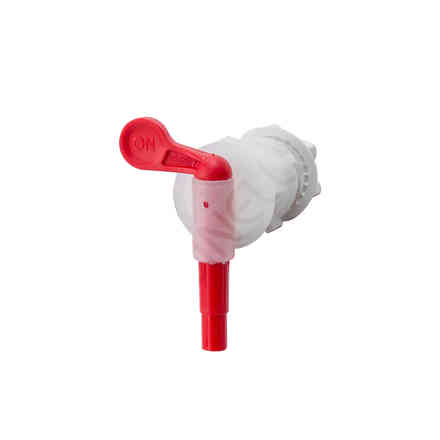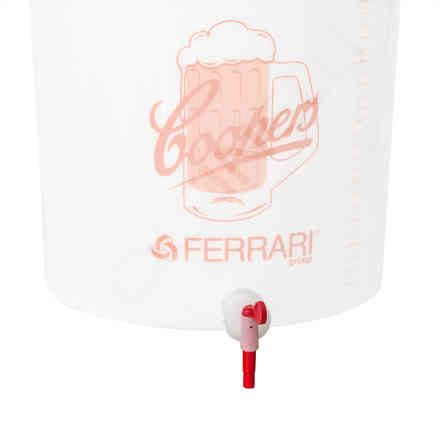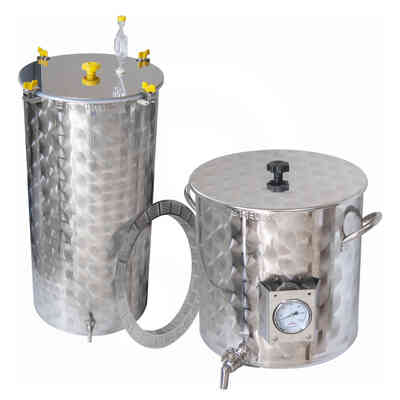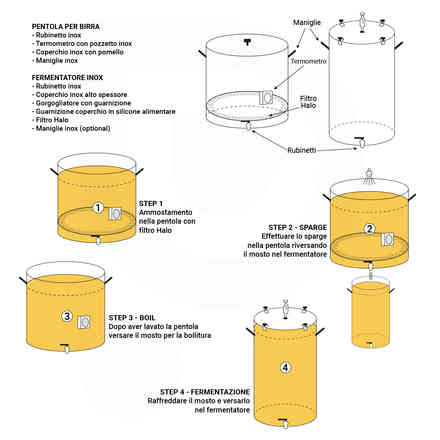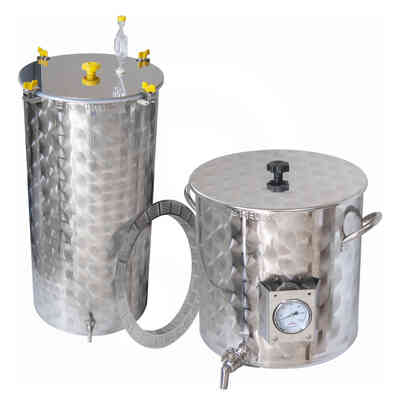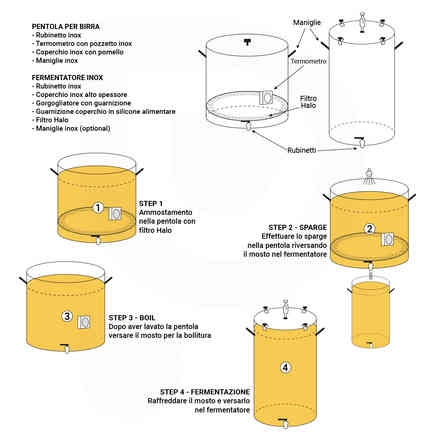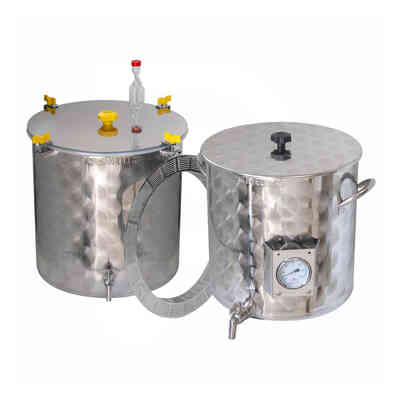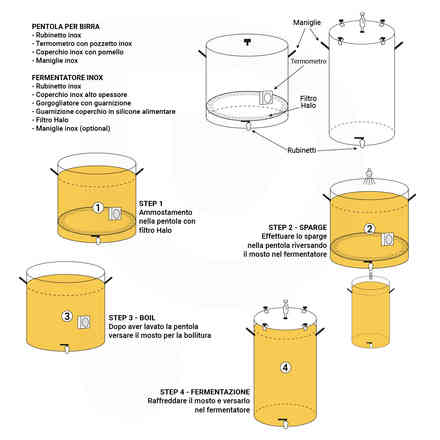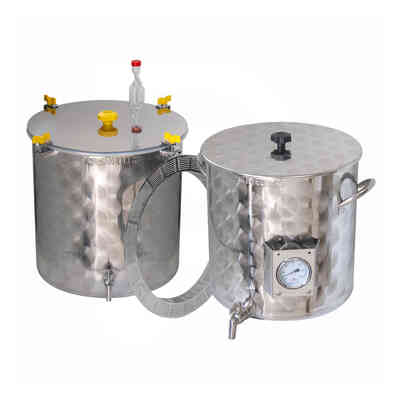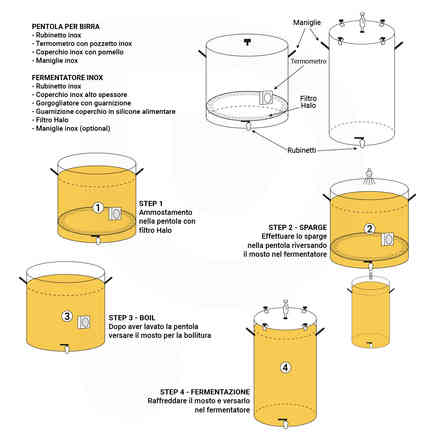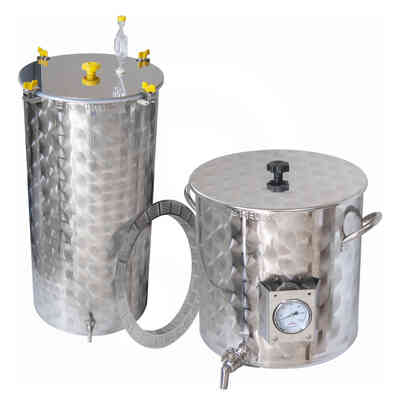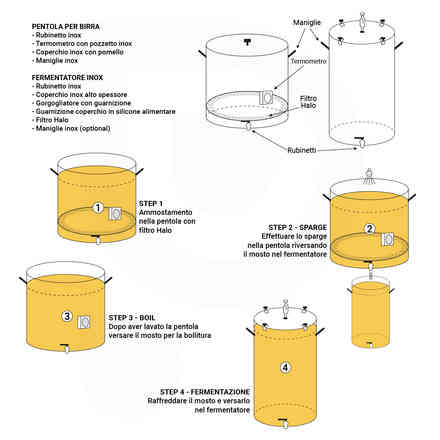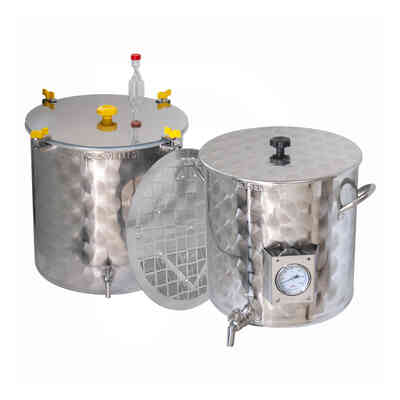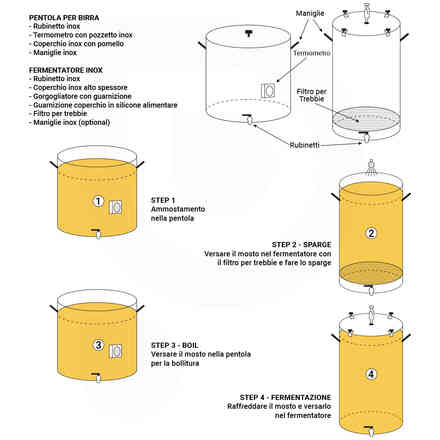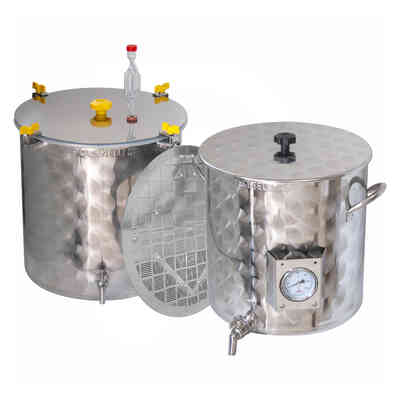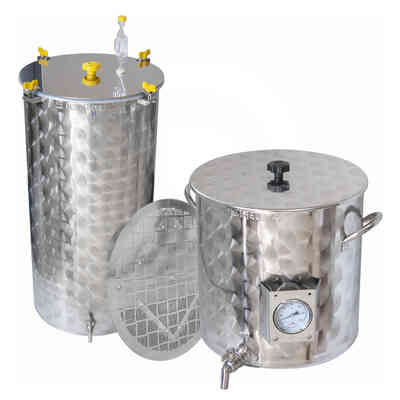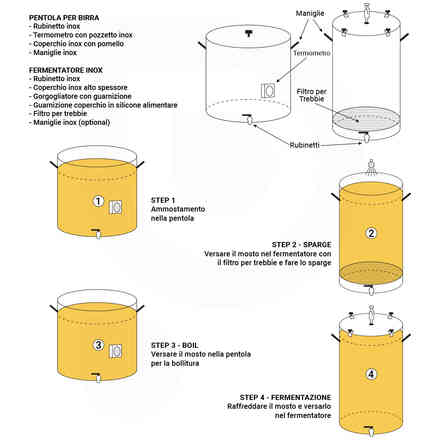DIY stainless steel beer kit
Description
DIY Beer Kit Inox AISI 304
With our DIY Beer Kit Inox AISI 304 you can start brewing 23 L of beer quickly and easily. All you have to do is mix water, sugar, ready-to-brew malt, and yeast to enjoy your favourite beer. The Do-It-Yourself Beer Kit Inox contains all the tools you will need to brew 23 L of beer. It starts with the fermenter with handles made entirely of AISI 304 stainless steel where you can ferment the wort, moving on to the densimeter to control fermentation, and finally to the corking machine with two levers to cork the bottles previously filled with the automatic decanter. These are complemented by other accessories for mixing and sanitising equipment.
Start brewing your favourite beer now!
Kit contents
- 35 L AISI 304 stainless steel fermenter with handles
- Bubbler with gasket
- Stainless steel tap
- Liquid crystal thermometer
- Densimeter
- Transparent cylinder
- Automatic beer decanter
- Non-toxic crystal tube
- Plastic beer scoop with spoon
- 100 g packet of Potassium Metabisulphite
- Bottle-washing brush
- Emily two-lever capper for crown caps Ø26/29
- Pack of 200 gold crown caps Ø26
Can be purchased separately:
How to brew your beer
- Wash and sanitize all equipment.
- Remove the yeast sachet from under the plastic cap and immerse the malt can in hot water for 10 minutes. It will be smoother and easier to mix.
NB: You can decide to replace the generic yeast contained in the malt with a selected one by choosing it here. - Put 3 litres of hot water into the fermenter and pour 1 kg of sugar. Once the sugar is dissolved pour the contents of the jar helping you with the spatula to pour all the malt and mix until all the mixture is mixed
- Add cold water to the fermenter until it reaches 23 lt, making sure that the temperature remains between 21 and 27°C. (Adjusts the addition of water between cold and hot to control the temperature).
- Now you have to introduce the yeast.
You have two choices: (Remember to always sanitize the tools you are using)
Method 1) Pour the yeast from the sachet taking care to spread it all over the surface. Cover for 15 minutes with the lid without closing to prevent dust or animals from settling. This will rehydrate the yeast. After this time mix vigorously with the paddle to oxygenate the must and yeast.
Method 2) Pour the yeast into a sanitized container containing hot water (33°C) in an amount equal to 10 times the weight of the yeast. Wait for the yeast to activate (about 15 minutes). The yeast will be ready as soon as you see foam on the surface. After this time pour the yeast into the fermenter and mix vigorously with the paddle to oxygenate the must and yeast.
After performing one of the two methods, close the lid without tightening the butterfly screws and place the fermenter in an environment that keeps the fermentation temperature as unchanged as possible and should not undergo sudden changes. - Once you have placed the fermenter sanitize and insert the bubbler into the lid filling it with water and potassium metabisulphite. The bubbler will start bubbling after 4/5 hours. (Do not worry if it does not gurgle, there may be a leak of air if you have tightened the lid too much. If it does not work even in the following days, open the lid and check the must. If you find foam at the top it means that fermentation is underway).
- Temperature-controlled fermentation should last from 7 to 10 days (7 spring-summer - 10 autumn-winter).
- Once the fermentation time is over, the density of the beer is checked with the densimeter. If it is above 1006 wait one or more days depending on the result. If it's 1004/1006, try again for two consecutive days. If it is still at 1004/1006 then the fermentation is finished.
NB: The must used to check the density must be discarded - Pour the beer into another washed and sanitized container, taking care not to move the fermenter and letting the liquid flow slowly. To prevent oxygenation lay the transfer tube on the bottom of the tank.
- During the transfer, sanitize the previously washed bottles with a solution of water and metabisulphite (2 teaspoons of metabisulphite in 1 L of water) with the bottle wrapper and drain them into the bottle drainer.
- Once the transfer is finished, it washes and sanitizes the fermenter and slowly transfers the must inside again.
- Finished the transfer add to the liquid 5/6 gr per litre of sugar and stir to dissolve completely.
- Bottle the beer with the automatic bottler and cap the bottles by placing them vertically for refermentation in the bottle trying to respect the same fermentation temperature.
- After two weeks, open a bottle to verify that carbon dioxide has been created. You'll hear the sound of opening a beer bottle. You can also refrigerate the bottle for a few hours beforehand so you can taste it.
- After another two weeks you will finally be able to taste your beer even if the optimal result will be obtained in the 6 months of aging.
Have a good time!


























